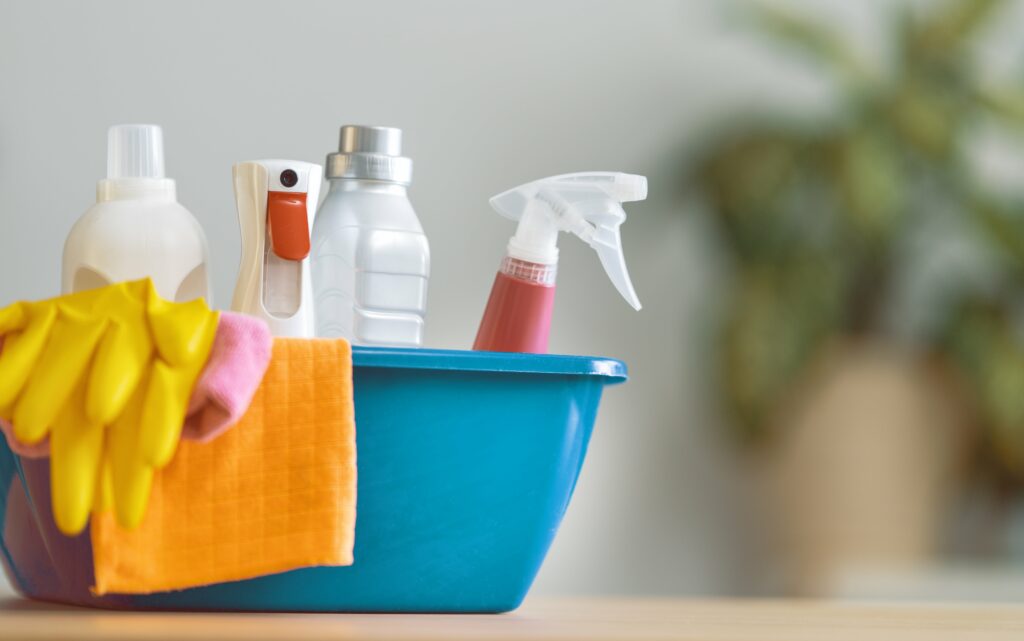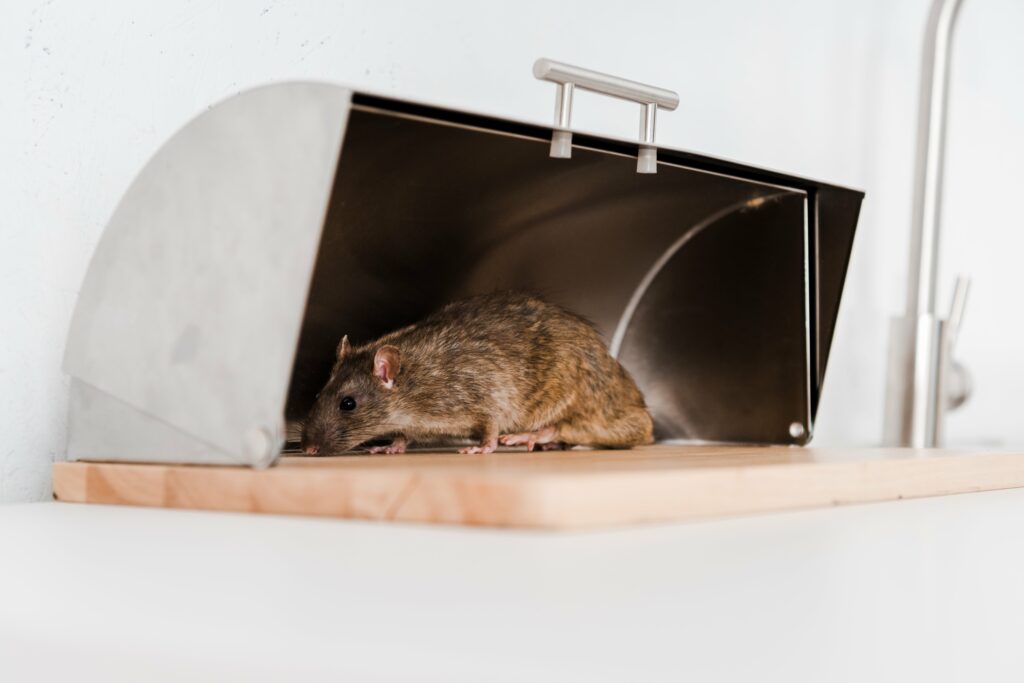Brief Explanation of Integrated Pest Management (IPM) Strategies
Integrated Pest Management, or IPM, is an approach used to manage pest populations that integrates a variety of pest control methods into a single strategy. The goal of IPM is to minimize the use of harmful pesticides by using a combination of preventive measures, biological controls, and other non-toxic methods in order to control pests.
In California agriculture, IPM practices are commonly used on crops in order to maintain a healthy crop while minimizing negative environmental impacts. This same principle can be applied to controlling mice infestations in homes and other buildings.
Looking for a lasting solution to your mouse infestation? Explore the advantages of hiring a professional exterminator in our informative article, Mouse Infestation Eradication: Why Hiring A Professional Exterminator Is Your Best Bet. Uncover the expertise and customized approaches that professional exterminators bring to the table, offering you peace of mind and a pest-free environment.
Importance of IPM for Controlling Mice Infestations
When it comes to rodent control, simply setting out traps or using pesticides as your first line of defense is not always the most effective or safest approach. With traditional pest control actions such as these, there is often the risk that pests can develop resistance to the measures taken against them over time. Integrated pest management (IPM) takes a different approach by focusing first and foremost on preventive measures such as habitat manipulation and exclusion techniques aimed at keeping pests out altogether.
By doing so, we can reduce our reliance on pesticides and other harmful chemicals. Not only does this help protect human health and the environment from exposure to toxic substances, but it also minimizes harm inflicted upon beneficial insects like pollinators that play a critical role in plant health and our ecosystem’s health.
Prevention Techniques
Sealing Entry Points and Gaps in Walls, Floors, and Ceilings
One of the first things you should do when managing pests is to prevent them from entering your home or building in the first place. Mice can squeeze through even the tiniest of openings, so it’s essential to seal any gaps or holes where they could gain entry.
Be sure to check for gaps around pipes, vents, and electrical wires that lead into your building. Also, check the weatherstripping on doors and windows to ensure they are tight-fitting.
Proper Food Storage and Waste Disposal

Food storage and waste disposal are critical aspects of long-term prevention for mice infestations. Keep food in airtight containers with tight-fitting lids to prevent mice from accessing it.
Make sure pet food is also stored securely. Additionally, make sure all garbage cans have tight-fitting lids that are secured at all times.
Maintaining Cleanliness and Sanitation

Mice are attracted to cluttered environments with plenty of hiding places. So keeping your environment clutter-free will not only help identify any potential infestation earlier but will also provide fewer places for pests to hide in general.
Cleaning up spills promptly, removing crumbs from countertops or floors as soon as possible is important since these provide sources of food for pests like mice that might be lurking around. By following these pest prevention techniques regularly as part of a long-term control plan over pest populations, you can make your environment less attractive to rodents like mice – taking action before they ever become established!
Trapping Methods: Catching Mice One Trap at a Time

When it comes to catching mice, there are a few different types of traps available. Snap traps, which use a spring-loaded bar to quickly kill the mouse upon triggering, are one option.
Glue traps, which hold mice in place with sticky adhesive, can also be effective. A third option is live traps, which capture the mouse alive so it can be released elsewhere.
The Right Place at the Right Time: Placing Traps for Maximum Effectiveness
No matter what type of trap you choose to use, proper placement is key for success. Mice tend to travel along walls and other edges and prefer dark places where they feel safe. Therefore, placing traps along walls or other areas where mice are likely to travel will increase your chances of catching them.
Handle with Care: Safe Handling and Disposal of Trapped Mice
It’s important to handle trapped mice with care both for humane reasons and because they can carry disease. If using snap or glue traps, wear gloves when handling them and dispose of dead mice in sealed plastic bags in the trash. For live traps, release the mouse far from your home in a location where it won’t cause harm.
Overall, trapping methods can be an effective part of an integrated pest management (IPM) plan for mouse control. By choosing the right type of trap and placing it strategically, you may be able to significantly reduce your rodent problem without resorting to pesticide use or other chemical pest control actions that could potentially harm natural resources or even human health.
Biological Control
Introduction of Natural Predators such as Cats or Barn Owls

One way to control mice without using harmful pesticides is to introduce natural predators into the environment. Cats and barn owls are both effective hunters of mice.
They prey on mice, reducing their populations over time, until they are no longer a problem. If you have a cat, let them do their job by allowing them to roam around your property.
Alternatively, you can install owl boxes in your yard to attract barn owls. This approach is a more natural and eco-friendly way of managing pests.
Use of Rodent-Specific Pathogens or Parasites
Another way to control mice populations is through the use of rodent-specific pathogens or parasites that can be introduced into the environment. For example, there is a type of bacteria called Bacillus thuringiensis (Bt) that produces proteins toxic only to insects and not harmful to humans or other beneficial organisms in the environment.
Other rodent-specific pathogens include bacteria like Salmonella and viruses like Hantavirus. These methods have been used successfully in public housing projects where rodent infestations pose significant public health concerns.
Beneficial organisms like nematodes are another option for controlling pest problems like mice infestations. Nematodes are microscopic worms that feed on insects and pests without harming other beneficial organisms in the soil ecosystem.
Using these various pest resistance methods can help reduce reliance on chemical pesticides and promote an ecologically sustainable approach for managing pests. Overall, biological control methods are an important part of integrated pest management (IPM) plans as they offer safer alternatives for controlling pests while protecting human health and the environment from potentially harmful chemicals found in traditional pest management strategies such as pesticides.
Chemical Control
Overview of Chemical Options Available
When it comes to pest control, chemicals can be a very effective tool in the fight against invasive species. For mice, there are a variety of pest control materials that are designed to eliminate these pests from homes and commercial buildings.
Some common options include baits, sprays, and dusts. Baits work by attracting mice with a food source that has been laced with poison.
Once the mouse ingests the poison, they will die within a few days. Sprays and dusts work by killing mice on contact or by poisoning them as they groom themselves after coming into contact with the product.
Proper Use and Application Techniques
While chemical options can be effective in eliminating mice, it is important to use them properly in order to ensure their effectiveness while minimizing potential risks. Follow established guidelines for each product and always use caution when handling or applying pest control materials. It is important to read the label carefully and wear protective equipment such as gloves and masks when applying sprays or dusts.
Potential Risks and Precautions
While pesticides can be effective in eliminating mice, there are also potential risks associated with their use. These products may pose a risk to humans if not used properly or if ingested accidentally.
In addition, pesticides may also have negative effects on non-target organisms or ecosystems if used excessively or without proper care. Always store pesticides out of reach of children or pets, follow action thresholds for application (such as only treating areas where infestation has exceeded a certain level), and consider other pest management strategies such as habitat manipulation or long-term prevention methods like tight-fitting lids on food storage containers rather than relying solely on chemical options for pest management.
While chemical control can be an effective first line of defense against mice infestations, Integrated Pest Management (IPM) strategies for mice should also include a variety of other prevention techniques such as habitat manipulation and trapping methods. When it comes to using chemical control options, it is essential to follow established guidelines and precautions in order to minimize potential risks while maximizing effectiveness in eliminating the target organism.
Monitoring and Evaluation
Regular Inspection: Identifying Signs of Infestation
Regular inspection is a critical component of an IPM approach to pest management. When it comes to mice, it’s essential to keep a close eye on areas where they may enter your home or building, such as around vents and windows.
You can also look for signs like droppings, chewed up food packaging or wires, and damage to other structures. Finding these signs early can prevent the infestation from growing out of control.
Recording Data: Tracking the Effectiveness of Your IPM Strategies
Effective monitoring is about more than just finding evidence of pests in your home or building regularly. It’s also important to record data on the effectiveness of your IPM strategies over time. This information can help you adjust your approach accordingly and identify which tactics were most successful in controlling the infestation.
Adjusting Your Strategies Based on Evaluation Results
One significant advantage of using an IPM program is that it allows for adjustments based on evaluation results. For example, if you’re using chemical-based pest control materials that aren’t working effectively against mice, you might switch to biological control methods that target only the target organism while minimizing risks to natural resources like healthy crops and insects essential for pollination. When monitoring indicates that rodents are resistant to certain types of pest control techniques, installation of door sweeps may be necessary.
The use of multiple IPM strategies at once is often best since it targets prevention as well as different stages in rodent life cycles. With careful monitoring and evaluation in place, it’s possible to achieve effective mouse control while maintaining a sustainable approach that minimizes risks to human health and natural resources alike.
Conclusion
The Importance of Implementing IPM Strategies for Controlling Mice Infestations
Integrated Pest Management (IPM) is an essential tool for controlling mice infestations. By following the preventive measures and utilizing the various pest management strategies outlined in this article, homeowners can take a proactive approach to minimize risks to human health and property damage associated with rodents.
The Benefits of IPM Programs for Long-Term Prevention of Mouse Infestations
When implemented effectively, IPM plans can lead to long-term prevention of mouse populations. This approach minimizes reliance on hazardous chemicals and promotes the use of alternate control methods that are both effective and environmentally-friendly. Additionally, IPM programs align with the goals of federal agencies like California Agriculture that aim to promote sustainable agriculture practices.
The Role Monitoring Plays in Effective Pest Management
Effective monitoring is key to successful pest management. Regular inspection helps identify signs of mouse infestations before they become severe, allowing quick intervention before large populations develop. Recording data on pest management efforts also enables homeowners to adjust their strategies as needed based on evaluation results.
Implementing an Integrated Pest Management (IPM) program can lead to better long-term prevention and control of mouse infestations while minimizing risks associated with hazardous chemicals commonly used in traditional pest control approaches. By utilizing preventive measures like sealing entry points and installing door sweeps, along with biological and trapping methods to manage pests, such as introducing natural predators or snap traps respectively, homeowners can take a proactive approach towards effective control of mouse infestations.
Put an end to rat and mouse infestations with D-Termination: the leading pest control service in Las Vegas

Are you exhausted from battling rats and mice on your Las Vegas property? D-Termination is the answer you’ve been looking for. Our team of experts excels in eliminating these bothersome rodents, ensuring tranquility is restored to your surroundings. Bid farewell to rat and mouse problems once and for all—opt for D-Termination’s effective pest control services today!
To schedule your rodent control service and reclaim your space from unwelcome guests, reach out to us at 702-919-6310 or visit dtermination.com.
Frequently Asked Questions:
The three strategies of integrated pest management for rodent control are prevention, exclusion, and population reduction.
Integrated pest management (IPM) utilizes a combination of preventive measures, habitat modification, and targeted treatments to control rodents.
The four methods commonly used in integrated pest management for rodent control are prevention, monitoring, physical control (traps), and chemical control (rodenticides) as a last resort.
The management strategies in integrated pest management (IPM) include proactive prevention, regular monitoring, using non-chemical control methods whenever possible, and resorting to chemical control only when necessary.
If this article piqued your interest, you might also find these related pieces appealing:
Compassionate Control: A Guide to Humane Techniques for Rodent Management
Rodent Remedies: Expert Tips For Thoroughly Cleaning And Sanitizing After A Mouse Infestation







